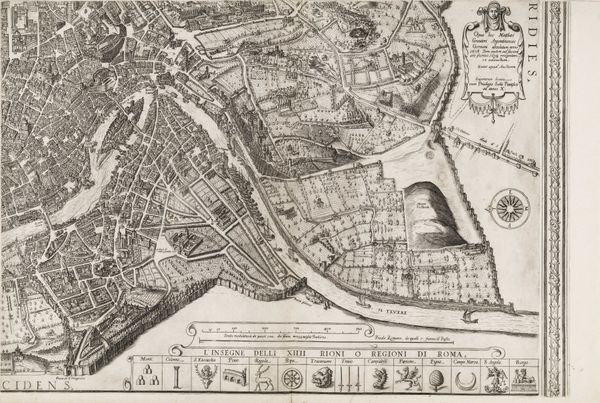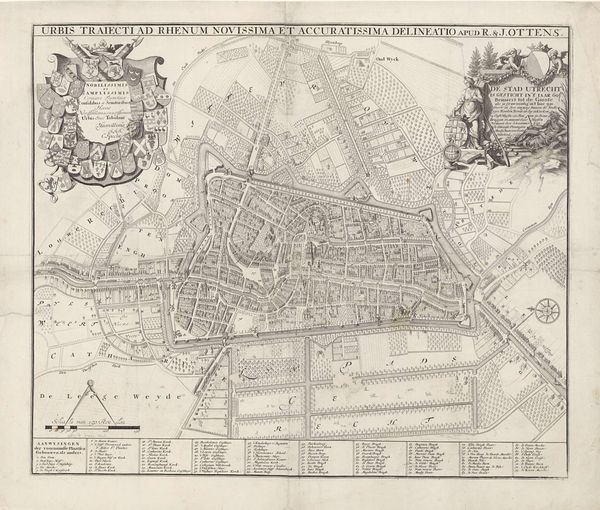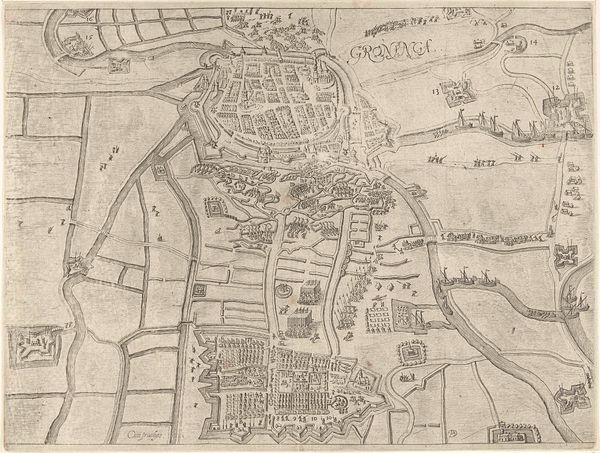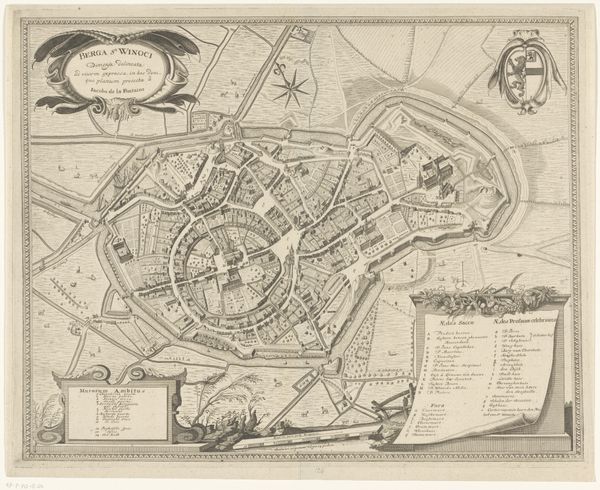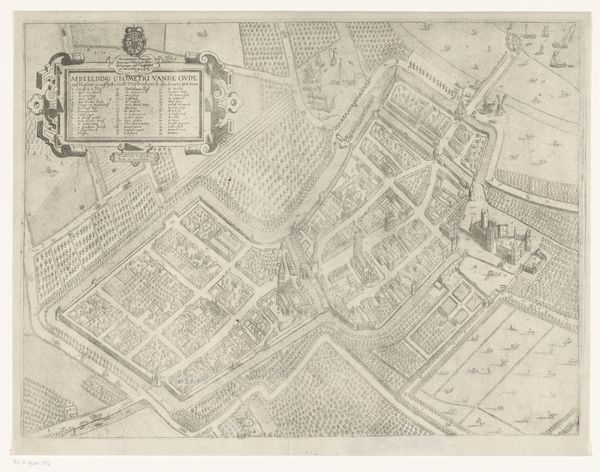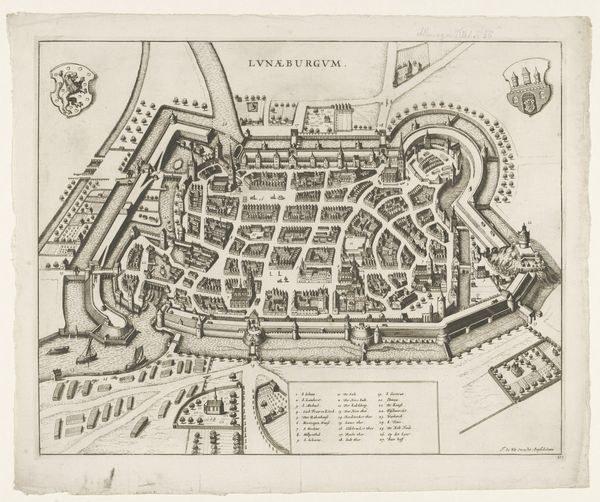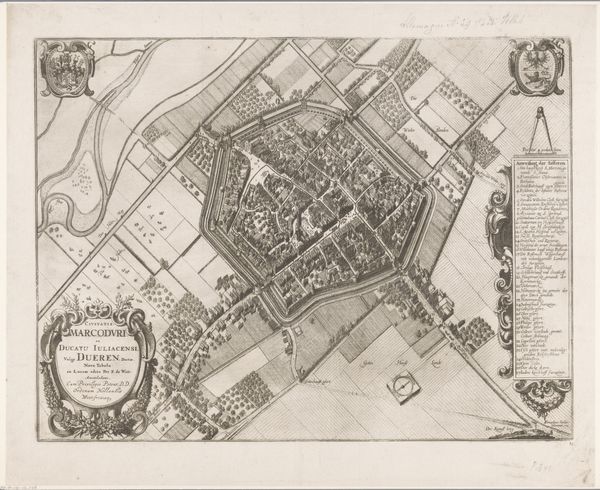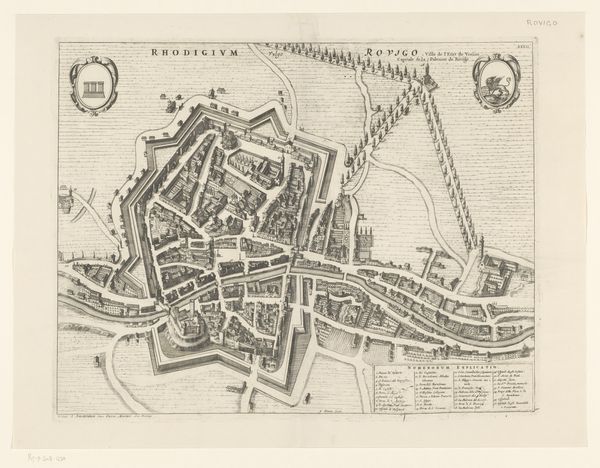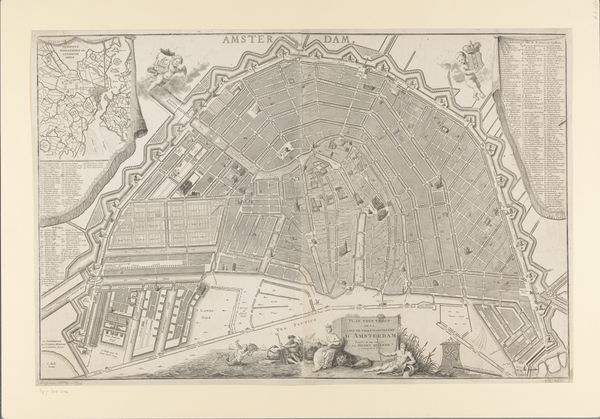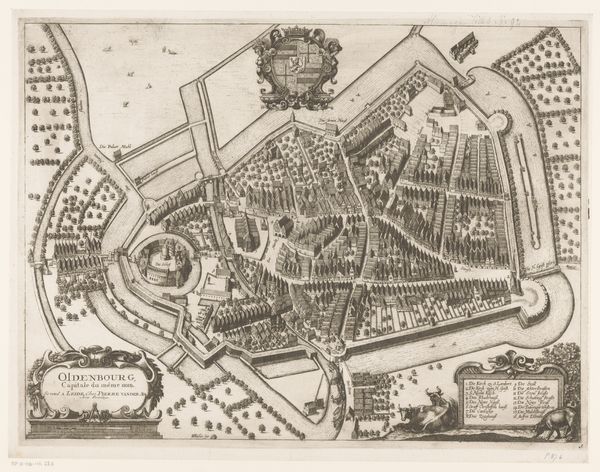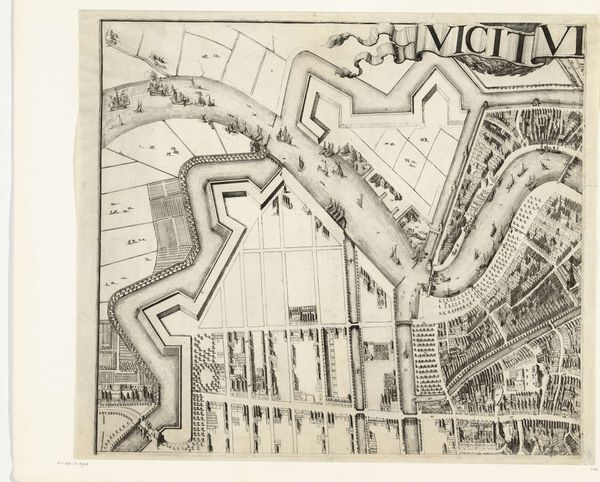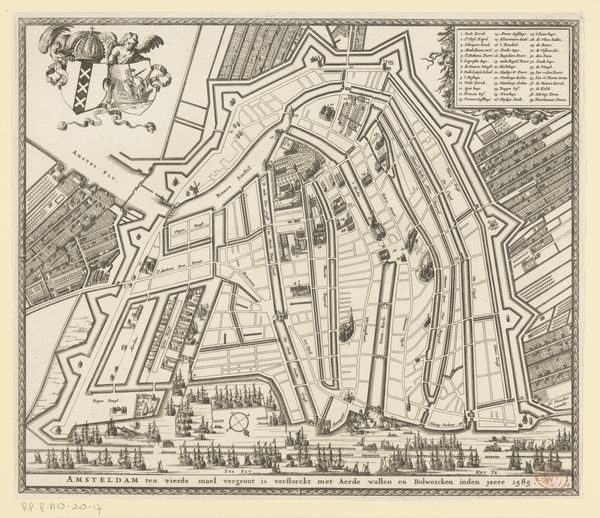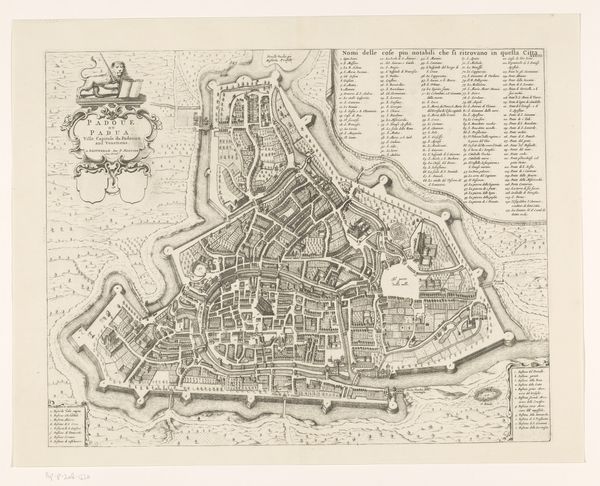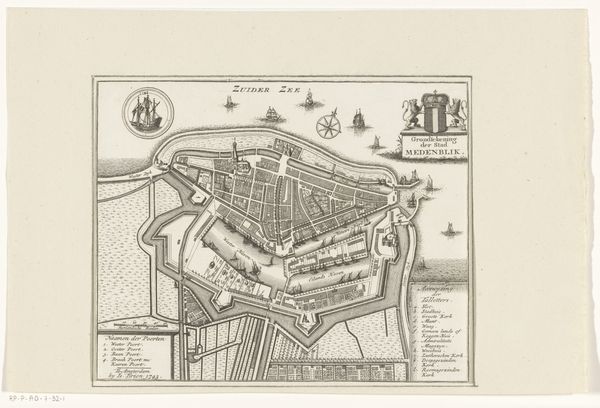
drawing, print, paper, ink, engraving
#
drawing
#
baroque
# print
#
paper
#
ink
#
cityscape
#
engraving
Dimensions: height 398 mm, width 520 mm
Copyright: Rijks Museum: Open Domain
Curator: This is Giovanni Battista Falda’s "Plattegrond van de stad Rome," a detailed cityscape rendered in ink and engraving on paper from 1676, now residing here at the Rijksmuseum. Editor: My immediate impression is one of remarkable order. The density of information is balanced by an almost serene arrangement. The Baroque style embellishments provide a striking contrast to the rigid lines of the city plan. Curator: Absolutely. Falda was not only illustrating Rome but also shaping perceptions of it. Note the material conditions of production: the print medium made the plan widely accessible, enabling a broader segment of society to understand and navigate the urban landscape. The printing press as a democratizing tool! Editor: Yes, and observe the contrasting textures achieved through the engraving technique. The controlled lines demarcating buildings and streets create an architectural language that speaks to precision and planning, while the decorative elements, with their swirling forms, add a layer of complexity, like a counterpoint to the rigid structures. Curator: Furthermore, consider the consumption of such images. For whom was this produced? Clearly, for those with vested interests: landowners, merchants, even pilgrims needed such cartography to negotiate property rights, trade routes, or ecclesiastical geographies within Rome. Editor: True. Structurally, the map provides a visual lexicon of urban life, from residential blocks to churches, all carefully positioned in relation to each other. Semiotics of space! The detailed rendering almost turns the city into a text to be read, parsed, and understood through a codified system of representation. Curator: And let's not ignore the labour. Think of the engraver's skill, their long hours meticulously transferring this image. This print exists as the product of very specialized artisans embedded in complex social systems of patronage and production. Editor: Seeing the grid-like structure and the elaborate bordering details makes me reflect on contrasts: art and information, order and embellishment. How elegantly Falda merges the pragmatic and the ornamental. Curator: Yes, these maps don’t merely represent space but also ideologies, demonstrating a deep commitment to order that permeates even the artistic presentation of the city. Fascinating when considered from this angle. Editor: Indeed. It reveals that the material conditions of creation deeply affect how we understand a place. Something to keep in mind, no?
Comments
No comments
Be the first to comment and join the conversation on the ultimate creative platform.
